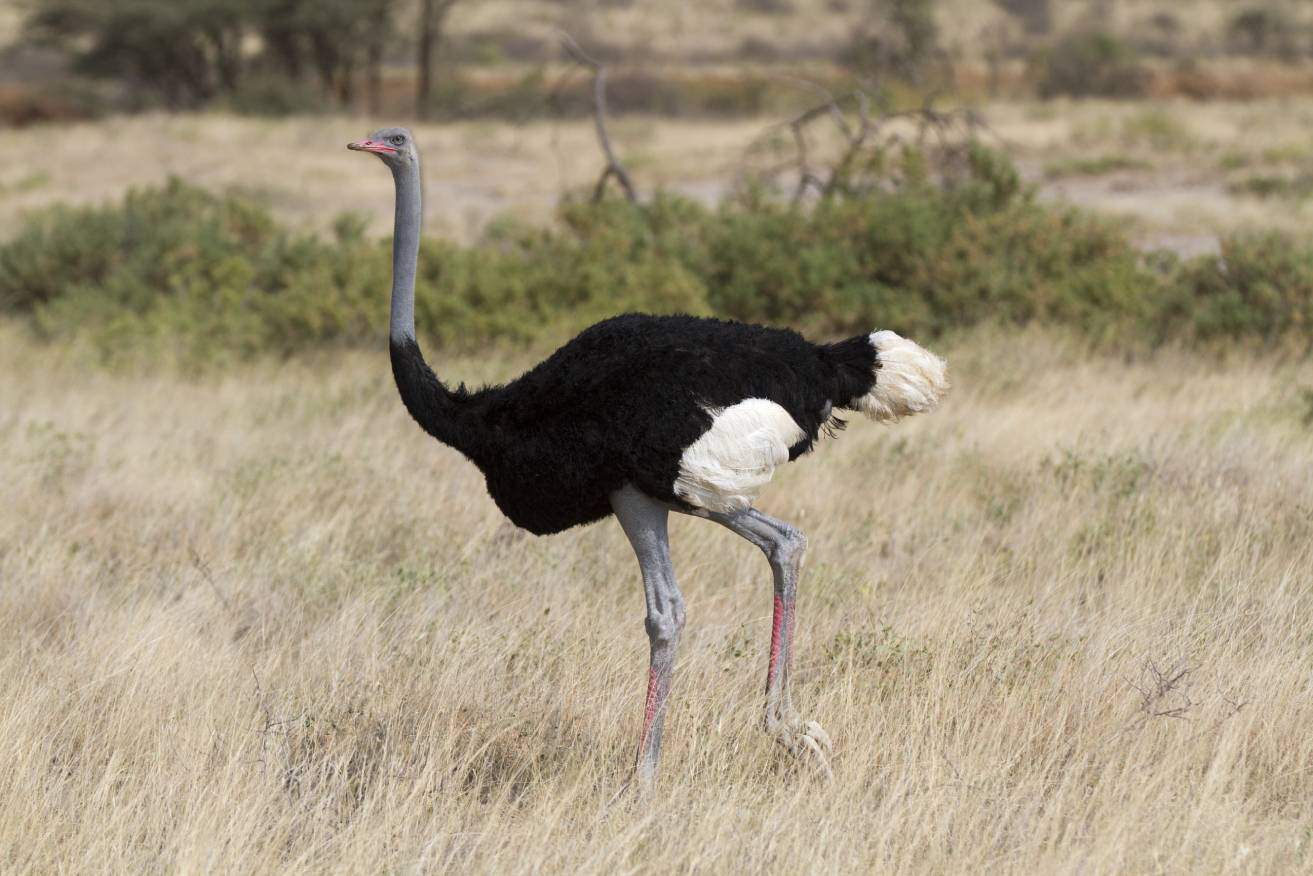The ostrich is a flightless bird native to Africa. They are the largest bird in the world1! Although they can’t fly, they can still move fast, sprinting at up to 43 miles per hour. Their powerful legs can carry them 10–16 feet in one stride.
Ostriches are different than many of the birds that we see flying around our yards. These huge birds can weigh up to 290 pounds and stand up to 9 feet tall2. What they lack in flight ability they make up for in running and kicking strength. So, how does their anatomy differ from the feathered friends in our backyards? Do ostriches have hollow bones like many flighted birds do? The answer is yes and no. Ostriches have hollow femurs, but the rest of their bones are solid. Read on to learn more about ostrich bones.

What Is a Ratite Bird?
An ostrich is a ratite, or a flightless bird. A ratite is a bird with a flat, or ratite, breastbone without a keel. Other ratites include the emu, cassowary, and kiwi.
The keel extends outward from the sternum and is attached to a flighted bird’s wing muscles. This structure is necessary to give birds leverage for flight. Without a keel, flight is impossible.

Why Do Birds Have Hollow Bones?
Flighted birds have hollow bones to make flight possible. These are known as pneumatized bones. The bones are filled with air sacs that supply oxygen to the blood. This gives birds more oxygen and energy during flight. If you were to look inside one of these bones, it would resemble a sponge. This feature also adds structural strength to the bones.
These bones don’t make birds lighter so they can fly, as is often assumed. Bird bones are not heavy, but they are quite dense, making them heavier than mammal bones of a similar size. For example, a 2-ounce mouse has a lighter skeleton than a 2-ounce bird. The bird’s bones are heavier and stronger to keep them from breaking easily.
Ostrich Anatomy
Since ostriches live on open land, there aren’t many places for them to hide. They are also prey animals. They have two defenses against predators: their speed and their kicking strength. Since they have to run away from danger, they have large hearts to supply blood to their muscles. This lets them run for up to 30 minutes at top speed before needing to rest.
They have strong thigh muscles and two toes on each foot. One large toe carries most of their weight, and the smaller toe helps them keep their balance as they move. The ostrich is the only bird in the world with just two toes on each foot. Other ratites have three toes and flighted birds have four.
The bones in an ostrich’s body look similar to our own. If you looked inside one, you’d see a solid structure of bone filled with a tube of marrow. The only hollow or pneumatized bones in an ostrich are their thigh bones, or femurs. The air sac system in these bones keeps ostriches cool while they run. They can also reduce their body temperatures by panting.
The rest of the ostrich’s bones are dense and solid, helping to support their life on the ground.

Ostrich Kick
If an ostrich can’t outrun a predator, they’ll have to fight instead. They will do this by kicking with their powerful legs. They can bend their knees and deliver strong, forward kicks.
The force of an ostrich kick can reach up to 2,000 per square inch. For reference, a professional boxer punches with a force of only 776–1,300 pounds per square inch. Ostriches are so strong that they can kill a human being or predator, such as a lion, in a single kick.
Another defense that an ostrich has while kicking is their sharp claws. The inner toe has a 4-inch claw that slashes as the ostrich kicks downward. This claw can disembowel or kill a human being. The lacerations inflicted by this claw can also fatally wound a predator.
Other Defenses
If all else fails, the ostrich, in an act of self-defense, can ram a person or predator with their flat, bony breastplate and knock them to the ground. Then, the bird will jump on top of the predator, causing rib fractures and other injuries.
Sometimes, the ostrich will try to avoid danger altogether. Instead of burying their head in the sand, though, which is a popular myth, they will flatten their heads and necks to the ground. This makes the ostrich look like a large rock, and predators will not notice them.
In the wild, ostriches live in flocks around zebras and antelopes, which are other prey animals. The zebras and antelopes unearth plenty of insects and rodents for the ostriches to eat. The ostriches repay this favor by keeping an eye out for danger. Their height and excellent senses of hearing and sight enable them to detect danger before it’s upon them. They can then warn the other animals to flee through a series of whistles, calls, and snorts.

Summary
Ostriches don’t have hollow bones like flighted birds. Their bones resemble human bones, solid and full of marrow. The only hollow bones an ostrich has are their femur bones. This helps them regulate their body temperatures while they’re running at top speeds.
Ostriches have plenty of defenses against predators to make up for the fact that they can’t fly to escape danger. In addition to their impressive running abilities, they have powerful kicks and sharp claws that can inflict fatal injuries to a person or another animal. Even though these large birds can’t fly, they have plenty of other characteristics that flighted birds do not.
Featured Image Credit: worldclassphoto, Shutterstock
